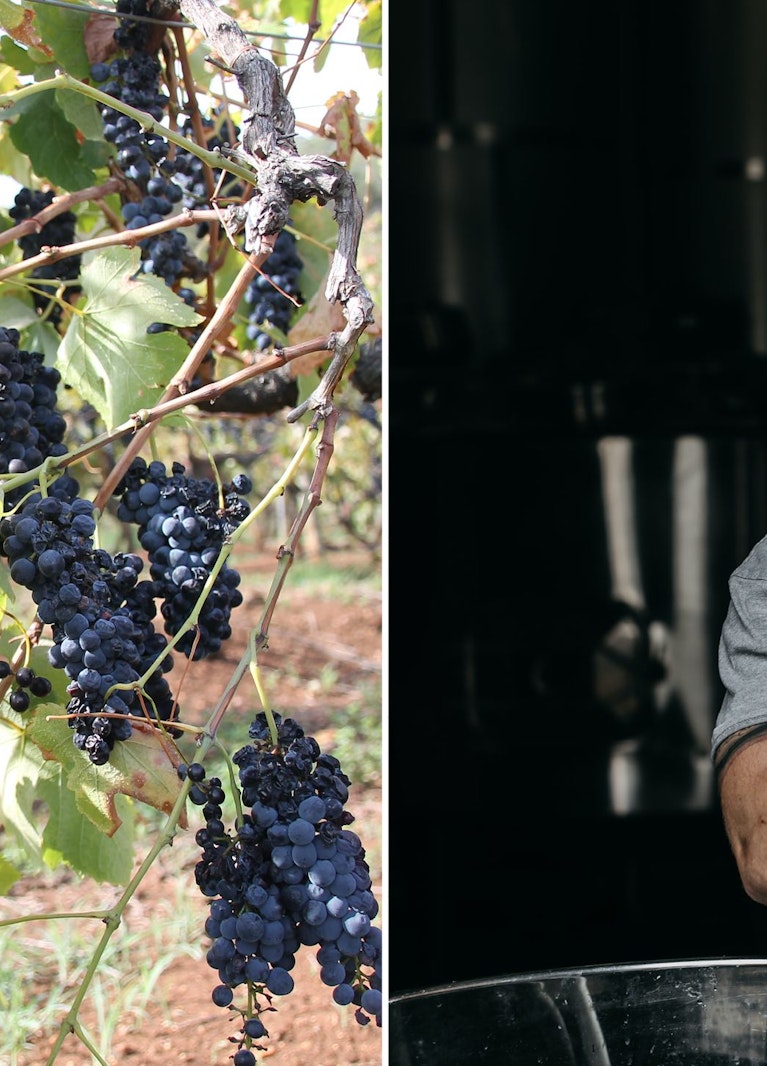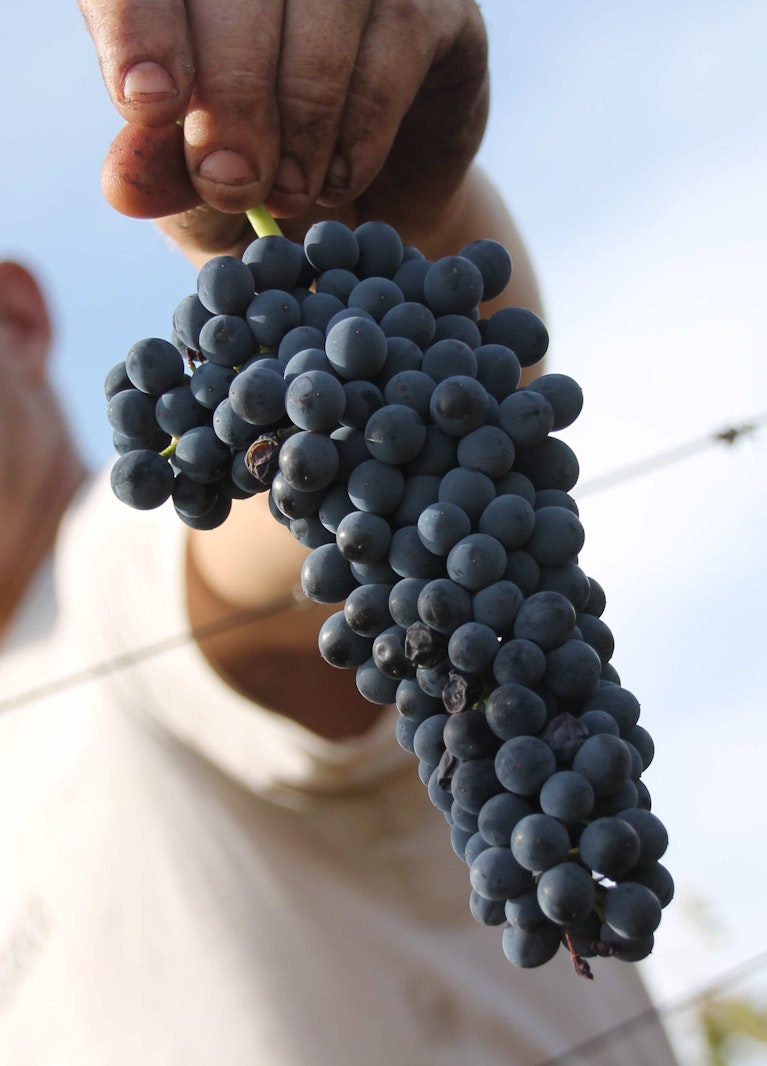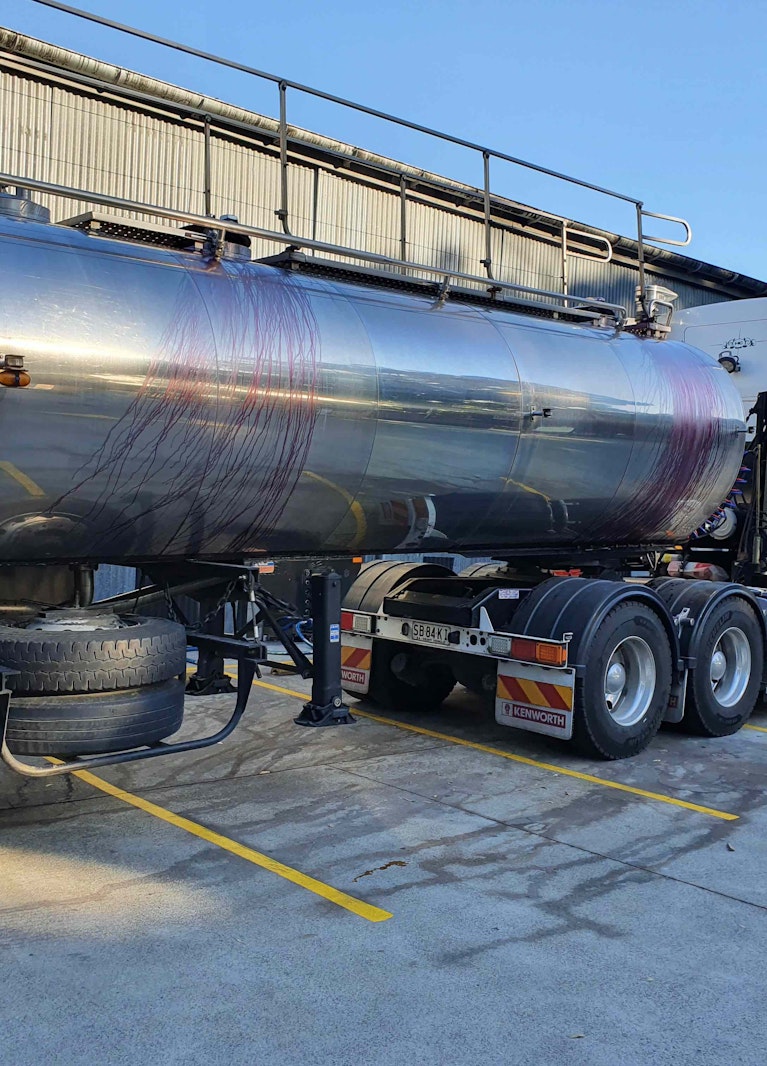From smoke tainted grapes to a Shiraz Spirit and Brandy: an update on progress with senior distiller Trynt Xavier

For the global community but also here in Australia, 2020 has been a challenging year for our industry and for our producers as we move from one crisis to the next. Back in January, during the recent catastrophic bushfire season, smoke taint spoiled grape vintages across the country, leaving wine makers at a loss.
As the country continued to burn from September 2019 through to March 2020, stories flooded in from the frontline—from friends, families, suppliers and customers. In the Hunter Valley alone, where many of those friends live and make their livings, vineyards faced a 24% reduction in grapes already affected by severe drought and an estimated 80-90% crop loss for the year. We knew we could use those grapes to make something special, so we called on master distiller Dave Withers and senior distiller Trynt Xavier, who together with Tulloch Wines and First Creek Wines, dreamt up a way to help some of the smaller growers in the region.
The question remains—where are they up to now? We caught up with Trynt to pick his brains on the science, the labour-intensive distilling process, and what we can expect once the eau de vie and brandy reaches the bottle. Teaser alert: he reckons the eau de vie might just be the drink of spring 2020.
With everything going on right now, this summer’s catastrophic bushfire season seems miles away. Do you remember how everyone was feeling at Archie Rose at the time?
Obviously everyone in Sydney was well aware of that giant smoke cloud hanging around at the time, even in the metropolitan areas. For us over at the distillery, we were pretty devastated by the scenes unfolding all over the country, many of which were happening to our own communities, our friends, our customers.
I've got a lot of friends in the wine industry and have a bit of a wine background myself. At the time, they were all talking about what they were going to do if the bushfire smoke did end up damaging their grapes. A lot of them were worried and started asking me if it was possible to distil the smoke taint out. I told them that it was technically possible, but it would probably be costly and most of them wouldn't really have the capacity or infrastructure to do it themselves. Nowhere near the capacity that we have.
So a week later I brought it up with our master distiller Dave as a semi-not-really-serious idea. In the end, he went away, brought it up in one of the meetings and came back ready to give it a shot. He was super keen to help out the broader New South Wales drinks community, and it all really just steamed ahead from there.
Dave sounds like a great boss, in the sense that no idea is a bad idea.
Yeah, and it's a company-wide thing as well. Will, the owner of Archie Rose, is also very receptive to a lot of the innovation and ideas that comes out of the wider team. The atmosphere here is really open in the sense that we all feel free to bring them up and then to see how far those ideas go.
Before we go any further—smoke tainted grapes. What are they?
It’s actually quite a new phenomenon...disaster is maybe a better word. It doesn’t happen in too many wine regions, only those that experience extreme bushfire seasons. California has had small pockets of it in the past, but Australia’s really the worst hit because we’re so dry with most of our wine regions surrounded by so much bush.
The damage happens when the smoke sits on or around the grapes for too long. The phenol in the smoke, which is a mildly acidic compound, ends up settling on the skin of the grape, and the longer that smoke hangs around, the deeper it penetrates into the skin. If they penetrate deep enough, especially if it's a red wine where you leave the skins on during the winemaking process, those phenols end up transferring into the juice. What you get in the end is not too attractive—think ashtray or next day cigarette butts instead of nice and fruity and floral.
You’re working with red wine in this instance.
Yes, with Cabernet and Shiraz grapes from Pokolbin, Broke and Denman in the Hunter Valley.

So, how smoky was the wine in the end?
Remarkably little. Which was quite a good thing, to be honest. There was a bit of smoke in the wine already, which was fine to work with on our end because we weren’t getting any of that intense ashy element. In short, good for us, but still too much for winemakers to use in this year’s vintage.
Did it help sharing knowledge and working alongside the likes of locals at Tulloch Wines and First Creek Wines?
It was great to have Liz Silkman, chief winemaker at First Creek Wines, guiding us through the whole process. Liz and Christina Tulloch, CEO of Tulloch Wines and also president of the Hunter Valley Wine & Tourism Association went about sourcing fruit from smaller local growers and then organising for it to be picked and crushed as a first step before Liz began the winemaking process. Almost everything up until we received the wine.
As I said, we were pretty happy with how the wine turned out, and part of that had to do with the work we did alongside her and the other First Creek winemakers to build the fermentation profile. Things like using a type of yeast that would accentuate the fruitiness of the wine, decreasing alcohol, and getting it off skins quite early to avoid too much smoke taint seeping in.
How much wine did you end up getting in the end?
We ended up getting 48,000 litres from multiple growers around the Hunter region. It was great to have the whole Hunter Valley community come together like that, instead of just going through one grower. That put a smile on all of our faces, on both sides.

As for the distillation process?
The way the usual distillation process works is through distilling the lighter and more volatile compounds off first—that's the stuff that we really wanted. Phenols are much heavier compounds. We ended up separating a lot of those heavy compounds, which came out later in the distillation run, then cutting them out both in the wash and the spirits still. What that does, though, is it increased the losses we would normally have making a spirit. That means that the process of removing smoke taint isn’t as efficient, but the extra work does help create a better product in the end.
The final products aren’t quite ready yet. But could you give us an idea of what they might taste like in the end?
The final brandy? I can't really at the moment because it hasn’t made it to the cask aging stage, which has such a profound impact on how it tastes in the end—but I could make a guess.
At the moment the way that they're displaying is very fruit forward. There's a lot of plum, apricot, stone fruit and blueberry. Also, you know that French custard tart? Tarte aux myrtilles—there was a bit of that coming through. All in all, it’s really complex and it's presenting really nicely.
The eau de vie is extremely smooth and I’m really happy with how it’s turning out. It’s got a nice soft creaminess to it, a bit of plum, and some apricot fruit flavours coming through. This one’s going to be a great springtime drink. I can already imagine it in a spritz.
You’re one of the few producers creating these kinds of products from smoke-tainted grapes, making it a relatively new science. What can you tell us about it?
Well, I’ve done my fair share of reading and research but I’m by no means a subject matter expert on this. The only people who are subject matter experts, if you’re wanting to go away and explore this further on your own, is the Australian Wine Research Institute. The thing is, it’s such a new disaster that so little research has been conducted into it. In fact, this year’s vintage would easily be the biggest body of research anyone’s done so far.
After months of working away, you’re now pretty close to having the final product done. How are you feeling about it all?
With everything going on in the world right now, it’s great to be able to work on something that creates good from such a devastating story. There are so many growers and producers out there that are going to struggle from this year to the next, and we’ve only been able to help a handful of them, but it’s a start.
Making things like brandy, eau de vie and other spirits from smoke-tainted wine really is a labour intensive process, so this has been a labour of love for us. I’m just happy we’ve been able to take this smoke-tainted wine, help people out in the process, and create something that I hope all of you are going to love. As a distiller, that’s all you can hope for.